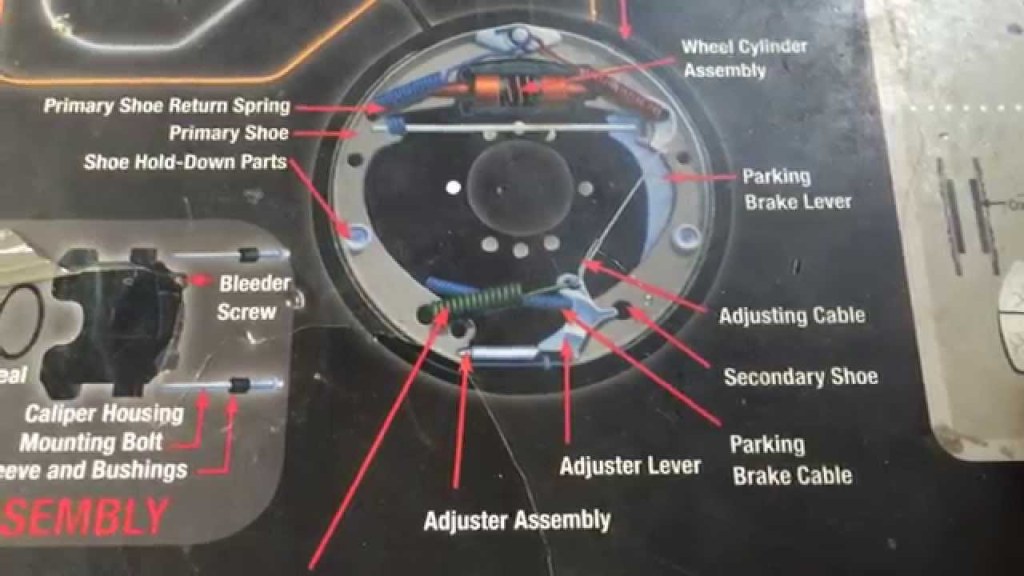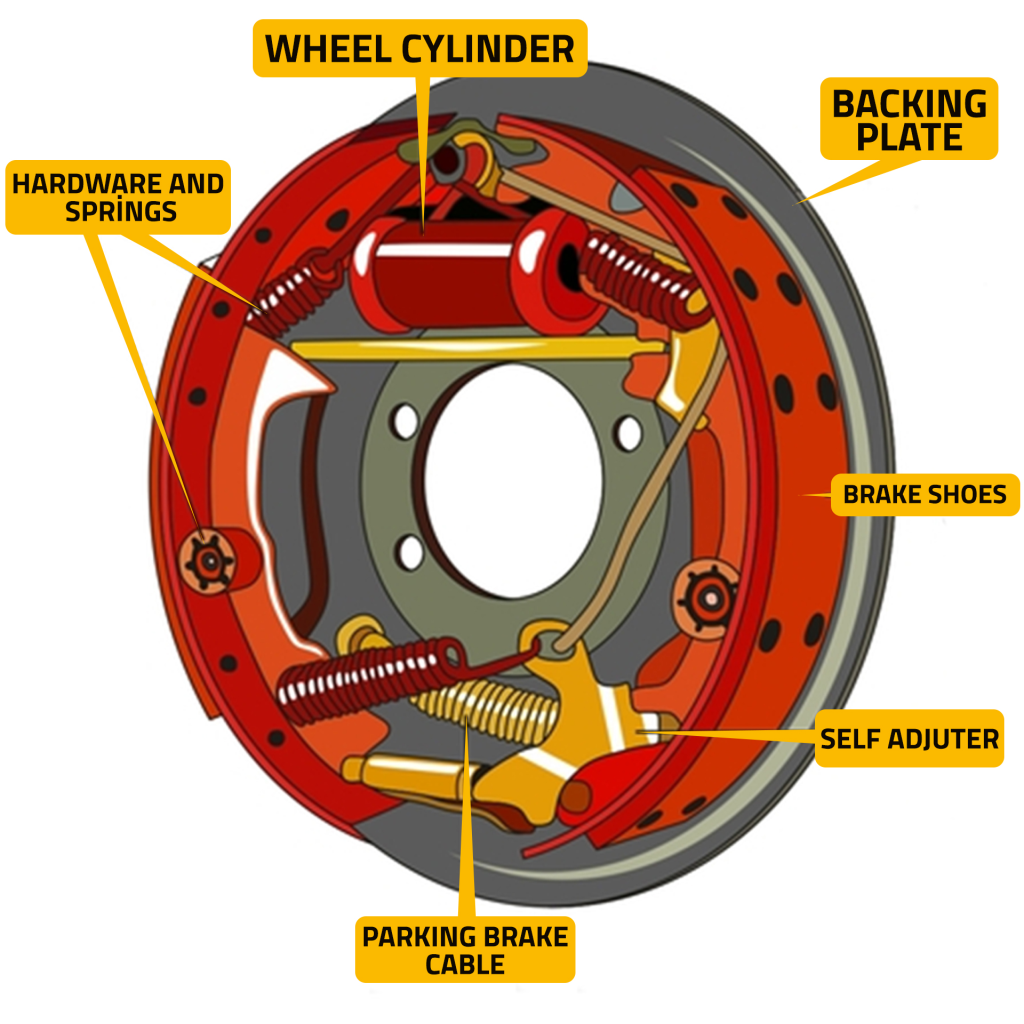Rear Drum Brake Assembly Diagram: Exploring the Inner Workings of this Essential Component
Welcome, Music Enthusiast! Today, we dive into the world of rear drum brake assembly diagrams. Whether you’re a drummer or simply curious about the mechanics behind this crucial automotive part, this article will provide you with a comprehensive understanding of how it all comes together. So sit back, relax, and let’s explore the inner workings of the rear drum brake assembly diagram.
Introduction
The rear drum brake assembly diagram is a visual representation of the various components that make up the rear drum brake system in a vehicle. It provides a detailed breakdown of each part’s location, function, and how they all work together to enable efficient braking. Understanding this diagram is essential for any car enthusiast or mechanic looking to maintain or repair their vehicle’s braking system.
Now, let’s take a closer look at the seven main sections of the rear drum brake assembly diagram:
1. What is a Rear Drum Brake Assembly?

Image Source: ytimg.com
📷
The rear drum brake assembly refers to the collection of components responsible for slowing down or stopping the rotation of the rear wheels on a vehicle. Unlike disc brakes, which use calipers and rotors, drum brakes utilize brake shoes, drums, and a hydraulic wheel cylinder to achieve the desired braking effect.
2. Who Uses Rear Drum Brakes?

Image Source: psbrake.com
🤔
Rear drum brakes were widely used in older automotive designs and are still utilized in some vehicles today. They are commonly found in smaller cars, trucks, and motorcycles. However, many modern vehicles have transitioned to disc brakes for improved performance and ease of maintenance.
3. When Should Rear Drum Brakes be Inspected or Replaced?
⏰
Regular inspection and maintenance of rear drum brakes are vital to ensure optimal performance and safety. It is recommended to have them inspected by a qualified mechanic at least once a year or every 12,000 miles. Signs of wear, such as squeaking or reduced braking efficiency, may indicate the need for replacement.
4. Where are Rear Drum Brakes Located in a Vehicle?
🌍
Rear drum brakes are typically located on the rear axle of a vehicle, behind the wheels. Each wheel has its own drum brake assembly, allowing for independent braking control. The diagram provides a clear visual representation of their placement within the overall braking system.
5. Why are Rear Drum Brakes Still Used?
🤷♂️
While disc brakes offer superior performance and ease of maintenance, rear drum brakes still have their advantages. They are generally more cost-effective and simpler in design, making them suitable for budget-friendly vehicles. Additionally, they provide a balanced braking system when used in conjunction with front disc brakes.
6. How Does a Rear Drum Brake Assembly Work?
🔧
The rear drum brake assembly diagram provides an in-depth look at each component’s function. When the brake pedal is pressed, hydraulic pressure is applied to the wheel cylinder, causing the brake shoes to expand and press against the inner surface of the drum. This friction slows down the rotation of the wheel, ultimately bringing the vehicle to a stop.
Advantages and Disadvantages of Rear Drum Brakes
Advantages:
1. Cost-Effective:
Rear drum brakes are generally more affordable than disc brakes, making them a popular choice for budget-conscious consumers.
2. Simplicity:
Their design is simpler compared to disc brakes, resulting in easier maintenance and repair.
3. Balanced Braking:
Rear drum brakes, when used in combination with front disc brakes, offer a balanced braking system that provides stability during sudden stops or emergency situations.
Disadvantages:
1. Heat Dissipation:
Rear drum brakes are more prone to overheating due to their enclosed design, which can lead to reduced braking efficiency.
2. Fading:
In heavy or prolonged braking situations, rear drum brakes may experience a decrease in performance, known as brake fade.
3. Limited Cooling:
The enclosed nature of drum brakes restricts air circulation, making it challenging to dissipate heat generated during braking.
Frequently Asked Questions
1. Can I replace rear drum brakes with disc brakes?
Yes, it is possible to convert rear drum brakes to disc brakes. However, it is a complex process that requires technical expertise and may not be cost-effective for older vehicles.
2. How long do rear drum brakes last?
The lifespan of rear drum brakes varies depending on factors such as driving habits, vehicle weight, and maintenance. On average, they can last between 30,000 to 70,000 miles.
3. Are rear drum brakes less effective than disc brakes?
Rear drum brakes are generally less effective than disc brakes in terms of heat dissipation and overall braking performance. However, for everyday driving situations, they can still provide sufficient stopping power.
4. Can I replace rear drum brake shoes myself?
While it is possible to replace rear drum brake shoes as a DIY project, it is recommended to have a professional mechanic perform the task to ensure proper installation and safety.
5. How often should rear drum brakes be adjusted?
Rear drum brakes should be adjusted periodically to maintain optimal performance. It is recommended to have them adjusted every 10,000 to 15,000 miles or as per the manufacturer’s guidelines.
Conclusion
In conclusion, the rear drum brake assembly diagram provides a valuable resource for understanding the intricate details of this essential automotive component. By delving into its various sections and exploring its advantages, disadvantages, and frequently asked questions, we hope to have enlightened you on the subject. Whether you’re a drummer or a car enthusiast, having a comprehensive understanding of rear drum brake assembly diagrams can benefit you greatly in maintaining and optimizing your vehicle’s braking system.
So, next time you hear the sound of squeaking brakes or find yourself in need of a brake inspection, remember the insights gained from this article. Take action, prioritize safety, and let your knowledge guide you towards a smoother and safer driving experience.
Disclaimer: This article is for informational purposes only and should not be considered as professional advice. Always consult with a qualified mechanic or automotive specialist for specific guidance on your vehicle’s rear drum brake assembly diagram.